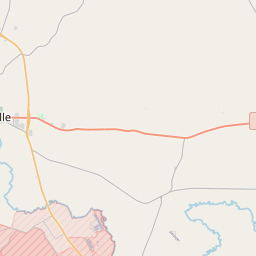Harman School Community Center







Harman School Community Center
In 1891, M.F. Harman deeded two acres to be used for a school and gathering place until the community, known as Harman Community, moved it in 1904 to Henry Wood's pasture, near Perryman Creek. In 1917-18, on four acres bought from Milton L. and Mary Lou Harman for $200, a new facility was built here, with three classrooms, offices and a stage. A teacherage was added in 1921. Over the years, the schoolhouse served Boy Scouts, a home demonstration club and even a rat killing club. After consolidating with Gatesville schools in 1948, the former schoolhouse remained a community center, owned and maintained by local trustees and used for special events, reunions and festivals.
(2002)
As one of the most visible programs of the Texas Historical Commission (THC), historical markers commemorate diverse topics in Texas history, including: the history and architecture of houses, commercial and public buildings, religious congregations, and military sites; events that changed the course of local and state history; and individuals who have made lasting contributions to the state, community organizations, and businesses.
The Texas Rangers, a famous law enforcement agency, were first organized in 1835 to protect settlers from Native American attacks.
During the Texas Revolution and the subsequent establishment of the Republic of Texas, Coryell County saw significant growth. The area attracted pioneers and settlers who were drawn by the fertile land along the rivers. In 1854, the county was officially organized and named after James Coryell, an early frontiersman who was known for exploring and surveying the area.
Throughout the late 19th and early 20th centuries, Coryell County experienced periods of prosperity and challenges. Agriculture, particularly cotton production, played a significant role in the local economy. The arrival of the railroad in the late 19th century enhanced the county's connectivity and spurred growth in trade and commerce.
The county also contributed to the military history of Texas. During World War II, Camp Hood (now Fort Hood) was established in the southern part of Coryell County. The military installation has had a profound impact on the local economy, serving as an economic engine and a significant employer for the region.
Today, Coryell County continues to thrive as a vibrant community. It is home to a diverse population and offers a mix of urban and rural landscapes. The county's rich history can be seen in its historic buildings, museums, and landmarks, all of which provide a glimpse into the past and contribute to the county's unique cultural identity.
Coryell County Timeline
This timeline provides a condensed summary of the historical journey of Coryell County, Texas.
- 1854 - Coryell County is established by the Texas legislature.
- 1859 - The county seat, Gatesville, is established.
- 1861-1865 - The American Civil War impacts Coryell County, leading to economic hardships.
- 1872 - The Texas Central Railroad is completed, boosting the county's economy.
- 1882 - The first county courthouse is constructed.
- 1905 - The original county courthouse is replaced with a new building.
- 1929 - The Coryell County Museum opens, showcasing the area's history.
- 1942-1946 - The county experiences growth during World War II due to the establishment of Camp Hood (now Fort Hood).
- 1963 - The current county courthouse is built, replacing the 1905 building.
- 1997 - The Coryell County Courthouse is added to the National Register of Historic Places.